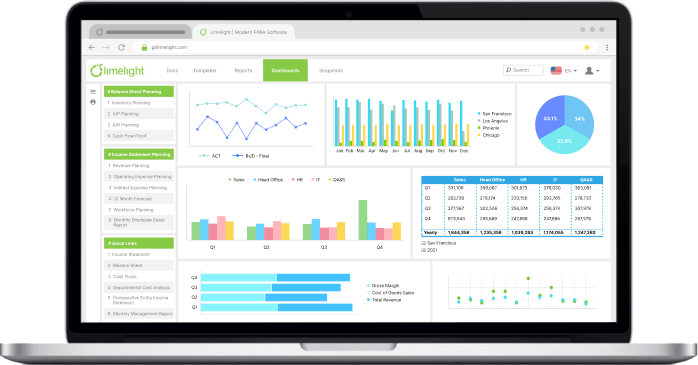Financial Planning & Analysis
Budgeting Hacks: 3 Ways CFOs & FP&A Teams Can Cut Cycle Times
By Limelight Team |
Published: June 14, 2024
By Limelight Team |
Published: June 14, 2024
Budgeting is often a time-consuming and cumbersome process, draining valuable resources and delaying crucial decision-making. The good news is that it doesn't have to be this way. With the right strategies and tools, you can significantly reduce your budget cycle time, freeing up your team to focus on strategic initiatives and driving growth.
Just How Long Should Budgeting Take?
The average budget cycle time varies widely depending on the size and complexity of the organization, industry, and the tools and processes used. Research from APQC (American Productivity & Quality Center) found that top-performing organizations complete their annual budget in 25 days or less, while bottom performers take 56 days or more. The median cycle time is around 32 days.
Key Drivers of Long Budget Cycles
Several factors contribute to lengthy budget cycles, including:
Manual Processes: Relying on spreadsheets and manual data entry is inefficient and prone to errors. It often leads to multiple iterations and delays as teams work to reconcile data and correct mistakes.
Lack of Collaboration: A siloed approach to budgeting, where departments work independently, can hinder communication and lead to misaligned goals and assumptions.
Limited Visibility: Without a clear view of real-time data and forecasts, it's difficult to make informed decisions and adjust plans as needed.
Excessive Iterations: The more times a budget is revised and reviewed, the longer the cycle time. Many organizations get stuck in a cycle of endless revisions, leading to frustration and delays.
3 Ways to Improve Your Budget Cycle Time
Embrace Cloud FP&A Software: Implementing a modern cloud-based financial planning and analysis (FP&A) solution can dramatically accelerate your budgeting process. These platforms automate data collection, streamline workflows, and provide real-time visibility into key metrics. This enables better collaboration, reduces manual errors, and eliminates the need for multiple iterations.
Adopt Rolling Forecasts: Instead of relying on a static annual budget, consider transitioning to a rolling forecast model. This involves continuously updating forecasts throughout the year, based on the latest data and insights. Rolling forecasts provide greater agility and responsiveness to changing business conditions, reducing the need for major budget overhauls.
Streamline Communication and Collaboration: Establish clear communication channels and designated liaisons between departments. This ensures everyone is on the same page, reduces bottlenecks, and minimizes the number of budget iterations. Consider implementing regular budget review meetings to address issues promptly and keep the process moving forward.
Additional Tips for Optimizing Your Budget Cycle Time
Set Realistic Timelines: Develop a clear project plan with realistic deadlines for each phase of the budgeting process.
Prioritize Key Metrics: Focus on the most critical financial drivers and avoid getting bogged down in excessive detail.
Empower Your Team: Provide your team with the necessary training and resources to effectively utilize your FP&A software.
Leverage Automation: Automate repetitive tasks like data entry and report generation to free up your team for higher-value activities.
Continuous Improvement: Regularly evaluate your budgeting process and identify areas for improvement.
By implementing these strategies, you can significantly reduce your budget cycle time, improve accuracy, and enable more informed decision-making. This will empower your organization to be more agile, adaptable, and ultimately, more successful.
Subscribe to our newsletter


